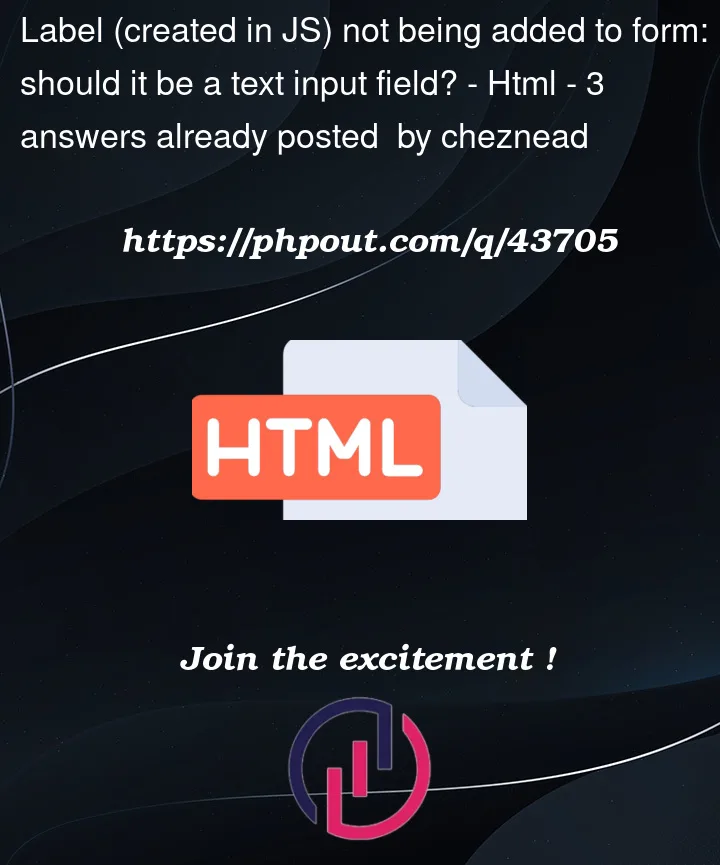I have a HTML form where a user should be able to add a new label and input field and an associated delete button on the click of an add/plus button.
This is only showing the input field and the delete button at the moment but won’t show a label. I’m trying to make this work for just one input field for now and then I will need to auto increment id to give each new input field a new id and have that also associated with a new label.
I’m slightly confused on how to approach this. I need the user to specify the text that will go in the label. To achieve this, do I need to create it as an input field initially and give them a hint that it’s the label and the other box the input field for the value? Is that a correct understanding of what I should be doing?
Here is my JS code:
function addField() {
const container = document.getElementById('new-fields');
// Create new label
const label = document.createElement('label');
label.type = 'text';
label.name = 'label1';
label.id = 'label1';
label.for = "input1";
// Create new input field
const input = document.createElement('input');
input.type = 'text';
input.name = 'new_field[]'; // use brackets to create array in form submission
input.id = 'input1';
const deleteBtn = document.createElement('button');
deleteBtn.type = 'button';
deleteBtn.textContent = 'Delete';
deleteBtn.addEventListener('click', () => {
container.removeChild(input);
container.removeChild(deleteBtn);
});
// Add new input field and delete button to container
container.appendChild(label);
container.appendChild(input);
container.appendChild(deleteBtn);
// Not sure if I also need to append the container to the document? It works w/out
document.appendChild(container);
}




3
Answers
You do not need to use
document.appendChild(container);because this will throw exception as document can only have 1 child node i.e.<html>With your code, label is getting appended to the DOM but you don’t see it because it is empty.
To see the label, you should add some text to it.
Try
label.innerHTML = 'Label Name'Working fiddle: https://jsfiddle.net/u2z3q6vw/
The label is not a part of the form input (source). So to display the label text, just use
.innerTextlike this:Instead of using
just using
for better way.
Just creating a small web component that comes with a label and a delete button solves all of the problems you’re facing.